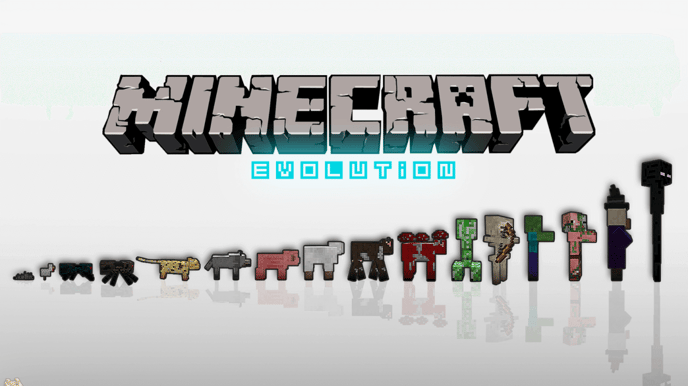
Minecraft's Evolution: Tracing the Changes Over the Years
Posted by Grace Anderson October 2nd, 2023
Embark on a journey through the remarkable evolution of Minecraft in this exploration of its transformative changes over the years. From its humble beginnings with basic mechanics and simple graphics, to its acquisition by Microsoft and the introduction of expansive updates that emphasized adventure, creativity, and community engagement, this article delves into the game's journey.
Discover how Minecraft's evolution has brought about enhanced graphics, next-gen console availability, and a vibrant marketplace, all while retaining its core essence of limitless creativity and exploration.
Early Days and Indie Root
Minecraft was introduced to the world by Markus Persson, also known as "Notch," in 2011. The early versions of the game featured basic mechanics, simple graphics, and a focus on survival and exploration. Despite its rough edges, Minecraft's open-world concept and limitless potential captured the attention of players and laid the foundation for its future growth.
Beta Phase and Feature Expansion
The game quickly gained a dedicated following during its beta phase. Notch and his team introduced new features, crafting recipes, and creatures that enriched the gameplay experience. This period saw the introduction of redstone mechanics, which allowed players to create complex contraptions and machines, paving the way for the ingenious creations that would come later.
Official Release and Modding Community
In 2011, Minecraft officially launched, marking a pivotal moment in its evolution. The game's community grew rapidly, and players began to develop mods — user-created modifications, — that introduced new content, gameplay mechanics, and visual enhancements. The modding community played a significant role in expanding Minecraft's possibilities and pushing the boundaries of creativity.
Acquisition by Microsoft and Updates
In 2014, Microsoft acquired Mojang, the company behind Minecraft. This acquisition marked a turning point, as it injected new resources and support into the game's development. The updates that followed brought significant changes, including improved graphics, new biomes, and additional gameplay elements. The "Better Together" update unified various platforms, enabling players to connect and play together seamlessly. Looks like enterprise software was greatly upgraded too.
Adventure and Exploration
Minecraft's evolution has seen the introduction of updates that emphasize adventure and exploration. The "Exploration Update" introduced woodland mansions, treasure maps, and llamas, encouraging players to venture far and wide in search of new challenges and rewards. The "Update Aquatic" transformed the oceans, adding underwater content, new aquatic creatures, and even shipwrecks to discover.
Creative Expression and Building
Building and creativity have always been at the core of Minecraft's appeal. Over the years, updates have provided players with an array of building blocks, decorative items, and tools to realize their architectural visions. The introduction of "creative mode" allowed players to construct without limitations and fueled the rise of massive, awe-inspiring builds.
Community Engagement and Marketplace
Minecraft's evolution has also focused on community engagement. The introduction of the Minecraft Marketplace allowed creators to share their creations, skins, and worlds with players for purchase. This fostered a community-driven economy and further empowered players to express themselves and contribute to the game's ecosystem.
Ray Tracing and Next-Gen Enhancements
Minecraft's evolution has continued into the modern era with cutting-edge technologies. The addition of ray tracing technology brought a new level of realism to the game's graphics, allowing for dynamic lighting, reflections, and shadows. Additionally, the game's availability on next-generation consoles showcased its enduring appeal and adaptability.